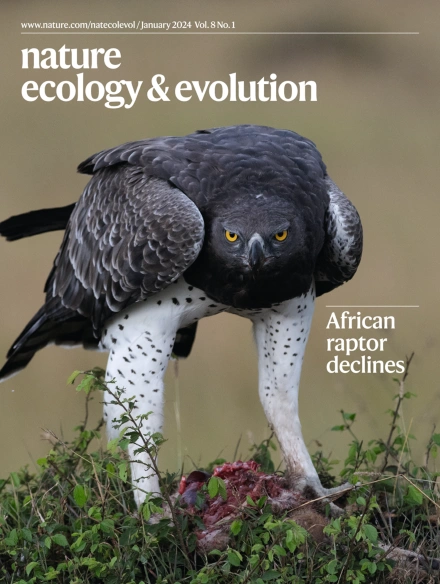人类活动增加了闪电的点燃,从而重塑了地球上所有生物群落的火灾季节性。
IF 13.9
1区 生物学
Q1 ECOLOGY
引用次数: 0
摘要
闪电点火和干燥植被的结合形成了整个地质时期的火灾制度。这些火灾制度反过来又影响了全球生物群落的特征。然而,人为点火已经从根本上改变了世界范围内的火灾制度,将火灾季节延长到燃料湿度高的时期,同时限制了火灾的发生和范围。对当代人类和闪电驱动的季节性火灾模式进行分类,可以揭示人类活动对全球火灾制度的影响程度。在这里,使用每日燃料湿度记录和相关的可燃性阈值,我们确定并描述了受燃料可用性限制的生物气候火灾季节的全球分布。然后,我们使用雷击密度记录将这些生物气候火灾季节分解为由人为或混合(即闪电存在)点火驱动的点火期。最后,我们根据每日卫星燃烧面积记录评估了我们的点火时间,并将燃烧时间与植被生产力和火灾的人为因素联系起来。总的来说,我们表明,人为影响通过延长潜在的火灾季节来塑造全球的火灾制度,而不考虑当地的土地利用、灭火措施、闪电发生和生物群系类型。本文章由计算机程序翻译,如有差异,请以英文原文为准。
Human activity augments lightning ignitions to reshape fire seasonality across all biomes on Earth.
The conjunction of lightning ignitions and dry vegetation has shaped fire regimes throughout geological time. These fire regimes have in turn influenced the traits of biotas globally. Anthropogenic ignitions, however, have radically transformed worldwide fire regimes by extending fire seasons to the limits bounded by periods of high fuel moisture while limiting the occurrence and extent of fire during periods of peak fire potential. Disaggregating contemporary human- and lightning-driven seasonal fire patterns can shed light on the magnitude of anthropogenic change to worldwide fire regimes. Here, using daily fuel moisture records and associated flammability thresholds, we identify and describe the global distribution of bioclimatic fire seasons as limited by the availability of fuels to burn. We then use a record of lightning strike density to disaggregate these bioclimatic fire seasons into ignition periods driven by anthropogenic or mixed (that is, lightning present) ignitions. Finally, we assess our ignition periods against a daily satellite burned area record and contextualize the timing of burning against vegetation productivity and the human dimension of fire. Collectively, we show that anthropogenic influences have shaped worldwide fire regimes by lengthening potential fire seasons, irrespective of local land use, fire suppression practices, lightning occurrence and biome type.
求助全文
通过发布文献求助,成功后即可免费获取论文全文。
去求助
来源期刊

Nature ecology & evolution
Agricultural and Biological Sciences-Ecology, Evolution, Behavior and Systematics
CiteScore
22.20
自引率
2.40%
发文量
282
期刊介绍:
Nature Ecology & Evolution is interested in the full spectrum of ecological and evolutionary biology, encompassing approaches at the molecular, organismal, population, community and ecosystem levels, as well as relevant parts of the social sciences. Nature Ecology & Evolution provides a place where all researchers and policymakers interested in all aspects of life's diversity can come together to learn about the most accomplished and significant advances in the field and to discuss topical issues. An online-only monthly journal, our broad scope ensures that the research published reaches the widest possible audience of scientists.
 求助内容:
求助内容: 应助结果提醒方式:
应助结果提醒方式:


